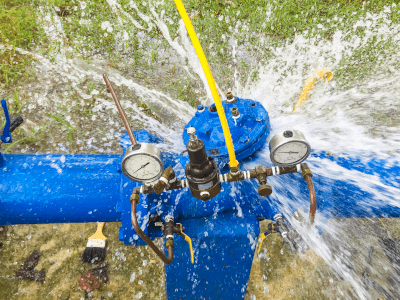What Is a Pressure Reducer?

A pressure reducer valve, as the name suggests, is a control valve designed to decrease the pressure of a specific fluid. It achieves this by lowering the pressure of the fluid as it flows from the primary side while maintaining a constant pressure on the secondary side.
This helps to reduce fluid pulsation and water hammer. Of course, it is also used to reduce the supply pressure that is too high for the intended use to an appropriate pressure.
When fluid passes through the valve plug and seat in the pressure reducer valve, it is squeezed, creating resistance and a pressure loss. This pressure loss is used to reduce the pressure and set the pressure.
Uses of Pressure Reducers
Pressure reducers are used in everyday life, but they are not often seen. Examples of their use include the primary side of pipes and tanks, water faucets, and steamers.
If the pressure is high enough to enter a tank or other equipment, there is a risk of rupture. This can be prevented by installing pressure reducers. In addition, if the faucet that is used daily is supplied directly with high-pressure water, the water will gush out with great force as soon as the faucet is turned on, making it impossible to wash hands. Furthermore, if the high-pressure steam is not fully utilized, the energy loss will be too large, and the product may melt or deform due to the excessively high temperature.
Features of Pressure Reducers
There are two types of pressure reducers: direct-acting and pilot-operated. The direct-acting type is used for small to medium flow rates, while the pilot-operated type is used for high flow rates.
The direct-acting type adjusts and maintains pressure by balancing the fluid pressure against the spring inside the valve. The force applied to the spring can be adjusted by operating the valve’s adjusting screw. The fluid pressure flowing through the valve plug pushes the spring back through the diaphragm. When these forces are balanced, the secondary side pressure is maintained. The pilot-operated type uses two pressure reducers of different sizes to regulate and maintain pressure; the pressure of the secondary side fluid is detected by the smaller pressure reducer valve, and the larger pressure reducer valve is activated by that pressure.
The direct-acting type has a simple internal structure and is characterized by relatively few failures. It also has little pulsation and requires no pressure differential for operation. However, it is not suitable for locations with large offsets and large flow rate fluctuations.
The pilot-operated type has a complicated internal structure and may malfunction due to a small amount of dust, etc. Also, it requires a pressure differential to operate. However, it has a small offset and can handle large flow rates. Furthermore, the rangeability (ratio of the minimum flow rate to the maximum flow rate that can be adjusted by the valve) is large.